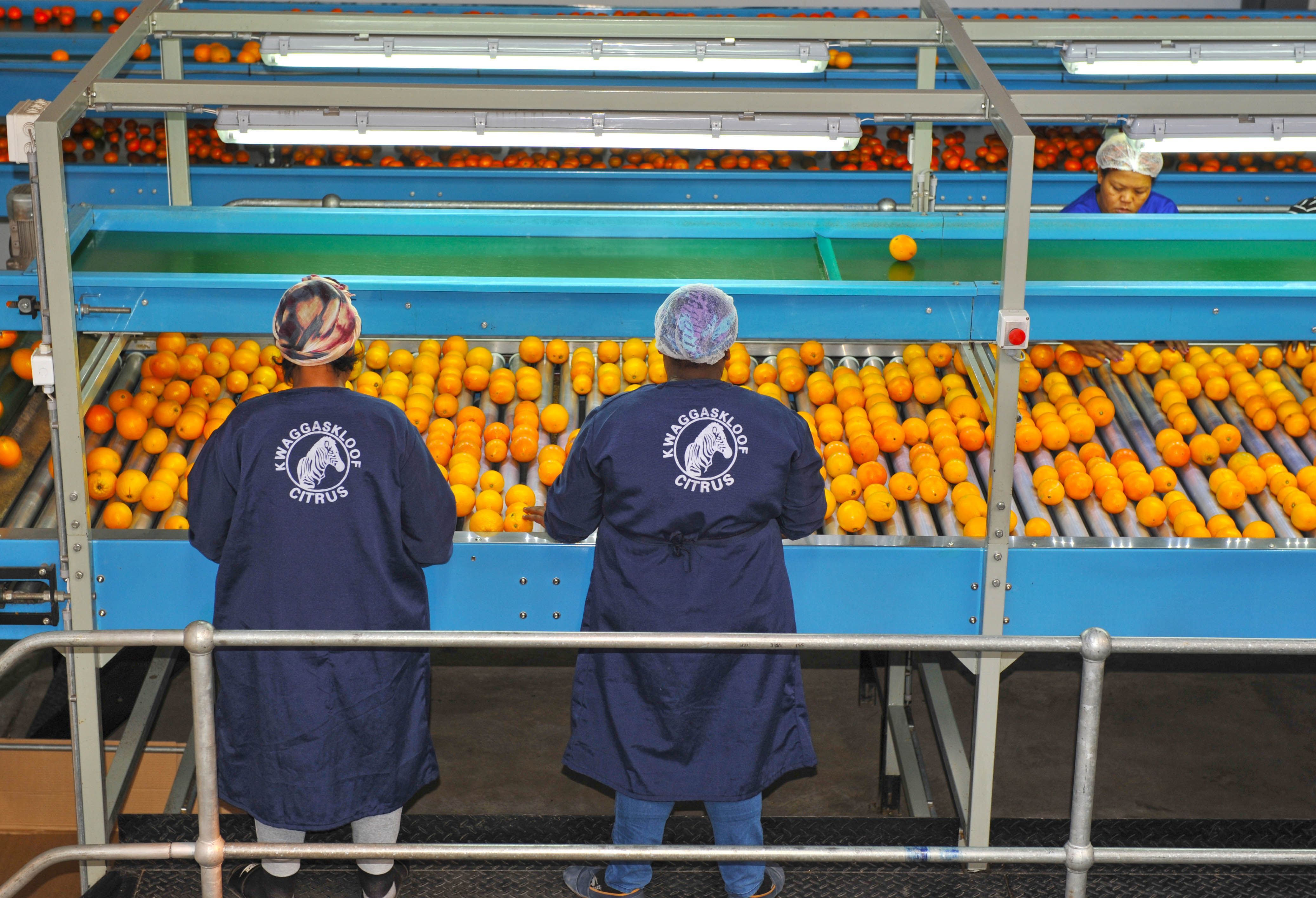New water woes for Gamtoos Valley farmers

With the new water year approaching on July 1, farmers are facing the prospect of only being able to draw a fraction of their usual annual water allocations from the Kouga Dam – a move which would have a dire economic impact on the agriculture-reliant region.
(PATENSIE) – AFTER a year of being able to draw 85% of their annual water allocations from the Kouga Dam, Gamtoos Valley farmers are facing the bleak prospect of having their water allocations cut dramatically for the coming water year, as the Kouga Dam level sinks below 10% capacity.
The pending July 1 cut in allocations for the 132 water users in the valley who rely wholly on the dam for their citrus, cash-crop and dairy production, would mean a dramatic drop in economic activity in a region heavily dependent on agricultural production.
Things were last this bleak for Gamtoos farmers in 2018, when the dam was also at a similar level and water allocations – decided by the Department of Water and Sanitation – were reduced to just 40% of users’ full annual quotas. The move signalled cutbacks in citrus and cash crop production in a valley renowned locally and internationally for its quality produce, which in turn saw job cuts for seasonal and permanent workers.
Following a deluge of rain in late 2018, the dam level recovered to over 55% capacity and farmers were permitted to draw 85% of their annual water allocation for the 2019/20 water year.
Aside from the agricultural water users, the Kouga and Nelson Mandela Bay municipalities also draw from the dam – one of the Eastern Cape’s largest water sources.
“The agricultural users in the Gamtoos Valley have been very careful with their water use,” said Rienette Colesky, CEO of the Gamtoos Irrigation Board which oversees water usage from the dam. “At the end of April, agricultural user’s water usage was 15.6% lower than normal. Nelson Mandela Bay is also currently drawing less than its allocated quota.”
The department would make a call on the new quotas “after a thorough scientific analysis taking into account the level of all the water resources in the Algoa System and the demand connected to them,” said Colesky.
“The dam normally fills up during floods, when there is heavy and high rainfall in the Langkloof, which is the dam’s catchment area. But that area is also very dry and very much in need of rain right now.”
GIB chairman and citrus farmer in the valley, Tertius Meyer, said a 25 or 30% allocation of farmer’s annual water quotas would help carry them through two-to-three dry months until the next peak rainfall period of October/November which, along with March/April, was historically when the dam received a decent intake of water.
“This past year’s 85% water allocation gave farmers a bit of a breather from heavy water restrictions in previous years. As citrus farmers, we used the higher water allocations to plant young trees which are now maturing and require more water. So, there is more pressure on us if we get restricted allocations,” Meyer said.
“For vegetable and other cash crop farmers, a restricted allocation means they will not be able to plant a full crop, which means they will need to hire less labour.
“With the catchment being as dry as it is, we need floods or something close to fill up the dam soon.”
According to Johan Kotze, chairman of Langkloof Water and director for Dutoit Agri Eastern Cape which owns farms in the Langkloof, the last time the region received its average annual rainfall was in 2015.
“Most dams in this area are either dry or have very little water,” said Kotze, indicating that these would first need to overflow before runoff from good rains could reach the Kouga Dam.
“I have spoken with other farmers here who say periods of below-average rainfall are getting longer and more frequent,” he said. “The last time the drought was this bad was in the 1980s.”
Port Elizabeth Weather Office spokesman Garth Sampson said only heavy rains could make a meaningful difference to dam levels.
“If we have normal to even above normal rainfall, the veldt will be awesome, but the dams will remain empty as there will be little runoff. This region relies on cut-off lows that deposit copious amounts of rain in a short period, causing maximum runoff and filling the dams.
“In a nutshell, a minimum of 50mm of rain in 24 hours is needed over the entire Langkloof to produce the required runoff to make any marked difference to the Kouga Dam’s levels. Then this must occur at regular intervals, say twice a year.”
However, good rains would not mean water conservation could end, as the region was drought-prone, Sampson said, adding that “normal to above normal” rainfall was predicted for the area for winter.
“The water crisis will never be over in this region and many parts of the world. Water is a limited and finite resource and the demand is constantly increasing… Conserving water must become a way of life for us going forward.”